by Alex Bolques | Nov 25, 2013
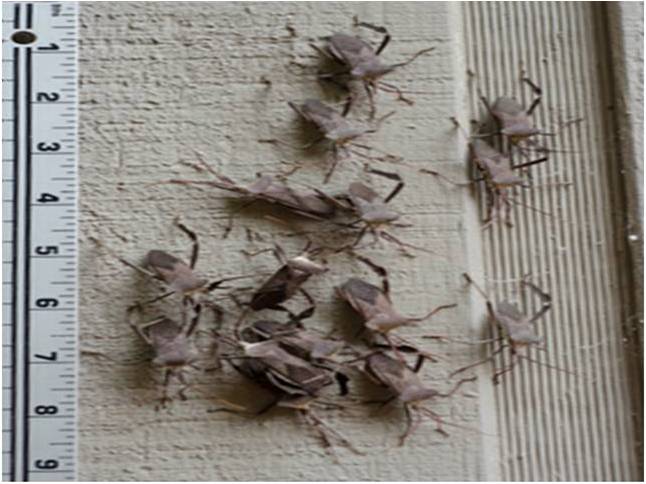
In search of an entry point into a home: Leaf footed bugs congregating on house siding in search of a warm sheltered environment to spend winter. Courtesy of Bill Stinson
Leaf footed bugs are pests of many seed, fruit, vegetable and nut crops. They get their name from the leaf shape of their back legs. The insect is dark brown to black and about an inch long. Like ladybird beetles, leaf footed bugs can invade your home in the fall in search of a warm sheltered environment to spend winter. In some cases, this may be inside your home. However, unlike ladybird beetles, which can invade a home by the hundreds, leaf footed bugs numbers are considerably less.
In both cases, they enter the home through openings such as cracks, crevices, crawl spaces, attics, ridge vents etc. Once inside, they do not cause any damage, eat, drink or reproduce. Instead, they go into what is called diapause, a dormant state. If you encounter them in living spaces of the home, a common management practice is to collect them by hand or mechanically by removing them with a vacuum cleaner and then releasing them outside. Leaf footed bugs are related to stink bugs and will give off an odor if crushed or held to long in your hand. Once spring arrives, they will become active and you may find them roaming around living spaces again. Use the same control tactic to help them find their way to the outside of the home.
It should be noted that ladybird beetles are considered a beneficial insect that feeds on crop-damaging insects such as aphids, mealy bugs, and white flies. On the other hand, leaf footed bugs are a serious pest of cotton and a direct pest of many seed, fruit, vegetable and nut crops.
Reference
Stink Bugs and Leaf-footed Bugs Are Important Fruit, Nut, Seed and Vegetable Pest
by Alex Bolques | Oct 25, 2013
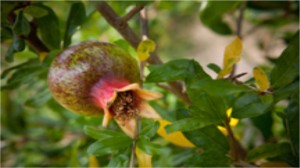 The avid gardener has heard on many occasions that fall is the best time of the year to plant trees and shrubs. Correct! Now is the time to start a fruit orchard or an edible landscape. As the seasons transition into much cooler weather, now is the ideal planting season for hardy trees, shrubs and ground covers (Trawick, 2013).
The avid gardener has heard on many occasions that fall is the best time of the year to plant trees and shrubs. Correct! Now is the time to start a fruit orchard or an edible landscape. As the seasons transition into much cooler weather, now is the ideal planting season for hardy trees, shrubs and ground covers (Trawick, 2013).
In the fall, plants require less water to get established and stress factors associated with planting in full sun are reduced. Although weather is cool, soil temperatures continue to be warm enough throughout the season to promote root growth. Thus by planting in the fall, the plant becomes more established by having a better and more vigorous root system than a plant that is planted at springtime.
Deciding what to grow sometimes is limited by what is available in a given area. Mail and online sales can be tricky if for those unaware about which fruit species perofrms best in Northwest Florida. To aid in this planning process, a link to a University of Florida IFAS publication (HS1218) is included that contains a directory of certified Florida nurseries offering fruit and nut crops. While it was developed to assist farmers locate fruit and nuts cultivars in Florida, it is helpful to begin thinking about what to grow and where to find it. The publication also lists recommended fruit and nut species and cultivars for North Florida, including north-central Florida.
Fruitscapes is a University of Florida website dedicated to fruit trees in Florida, which will increase understanding of fruit tree cultural and pest management requirements for all readers. Also explore “Temperate Fruit Crops” . Bookmark this webpage and refer to it as needed. Also, consult with your county extension office in your area.
by Alex Bolques | Sep 23, 2013
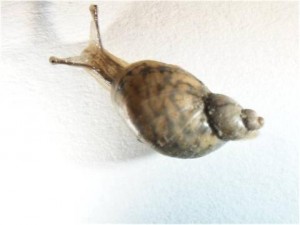
Cone Shaped or Cone Shell Snail Photo Credits: Heather M. Young, Biological Scientist, NFREC-Quincy
Occasionally on shipments of container plants, snails (terrestrial air-breathing gastropods) may be found attached to the container pot. Snails are abundant in nearly all parts of the world except the arctic regions, and feed almost entirely on vegetation. Those mostly encountered on nursery container plants are cone shaped reaching 1/2 to 2 1/2 inches in length and having an external enclosing spiral shell or occasionally rounded shell with four to five rapidly expanding whorls that are 1 to 1 1/4 inches in size.
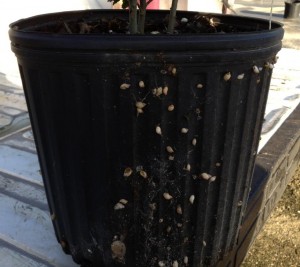
Image Credit: Henry Grant, Gadsden County Extension.
There are many species of snails. Most snails found on shipments are those restricted to tropical and semitropical regions requiring high humidity and warm temperatures. The U.S. has four native genera of Bulimulidae: Rhabdotus, Drymaeus, Orthalicus and Liguus. Of these, the last three genera are native to Florida. There is also another introduced genus in Florida, Bulimulus, which is primarily terrestrial. Other introduced species are Zachrysia provisoria and Caracolus marginellus in the Family Camaenidae occurs in Florida and found throughout much of the tropics.
Snails are also found in moist, shaded locations, which are similar to conditions found in container plant production areas, weedy locations or in organic trash. Most lay eggs throughout the season. Overwintering eggs may hatch in spring.
The following are general snail management suggestions:
- Remove excess organic material under plants. Organic materials provide moist hiding places for eggs and smaller snails, and sometimes as food sources.
- Monitor plant and environment moisture to reduce favorable snail habitats.
- When possible, remove the snails by hand, which is a reasonable, effective, nontoxic and environmentally acceptable control option.
- Check with your favorite garden store outlet for bait, biological, or chemical product control options.
For more information check out this gardening in a minute segment on snails and slugs.
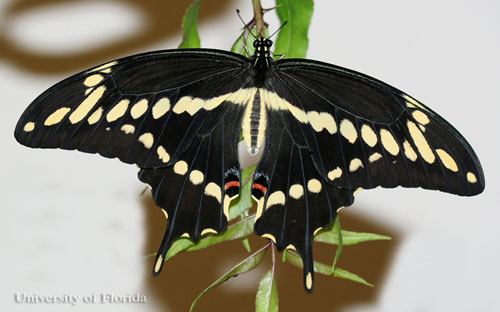
by Alex Bolques | Sep 2, 2013

Gardeners that have Satsumas, commonly known as orange mandarin (Citrus reticulate), probably have experienced a caterpillar called Orangedog. It is a chewing insect that feeds on citrus foliage including Satsuma and a few other plant species. The caterpillar is dark brown with creamy-white, mottled markings and is the larval stage of the giant swallowtail (Papilio cresphontes). It is a striking, wonderfully “exotic”-looking butterfly that is very abundant in Florida.
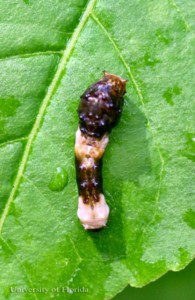
Young larva of the giant swallowtail, Illustrating bird dropping mimicry.
Credit:
Donald Hall, University of Florida
Many who have encountered the caterpillar for the first time describe them as looking similar to bird droppings. They can grow up to 1.5 to 2 inches in length and are the larval stage of the adult giant swallowtail butterfly. Established Satsuma trees can easily withstand the loss of a few leaves by Orangedog feeding. Small or newly planted Satsumas can be infested with numerous Orangedog Caterpillars on occasion, especially a single tree growing in a landscape.
A simple control measure consists of finding and crushing eggs and larva (GH-026). Bt, a biological control for most caterpillar species, is effective but should rarely be used since the beauty of this butterfly far outweighs the damage caused by them.
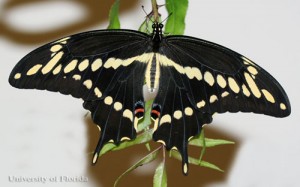
Adult giant swallowtail, with wings closed.
Credit:
Donald Hall, University of Florida
.
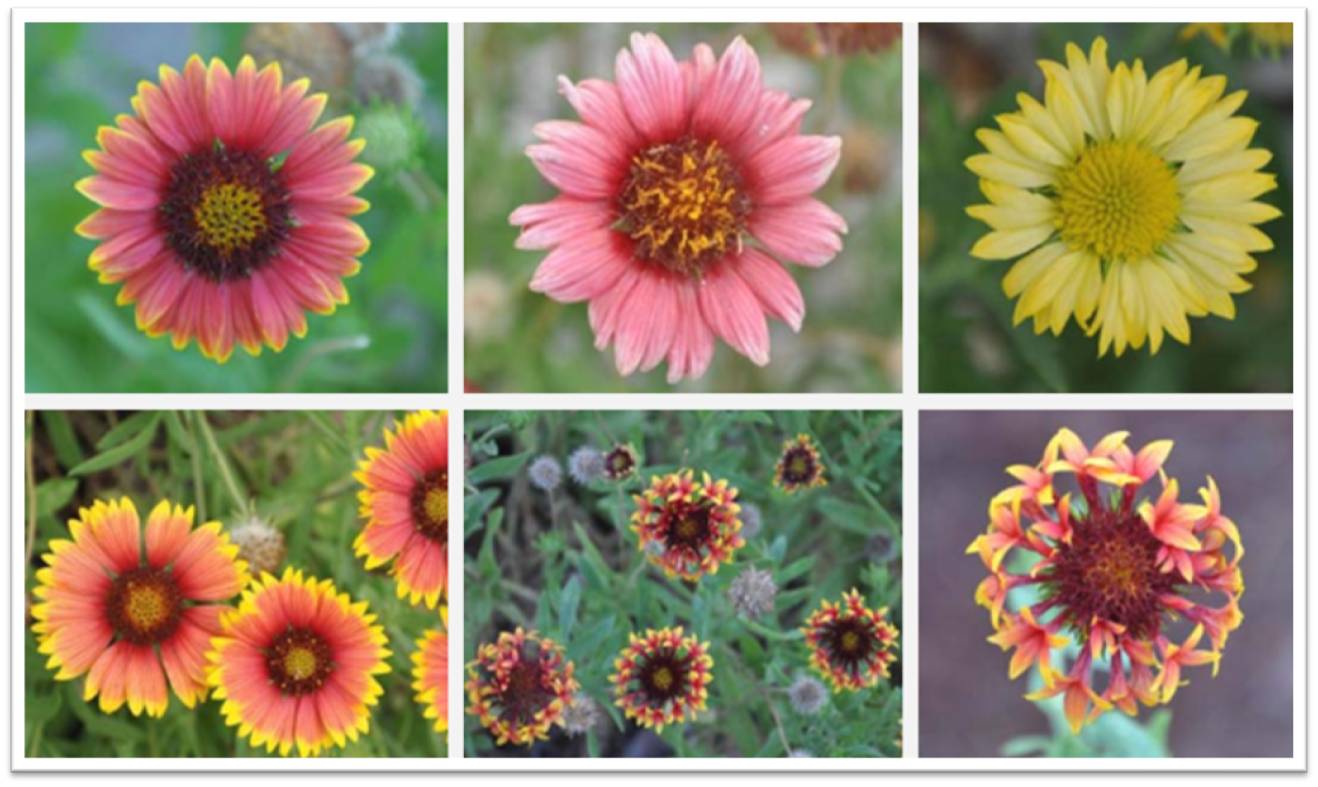
by Alex Bolques | Jul 22, 2013
Gaillardia is a favorite one of many wildflowers throughout the United States. It is a member of the Aster family, and is most commonly known as Indian Blanket or Blanket Flower. Individual plants can reach up to 2 feet high. They are heat and drought tolerant and, in Northwest Florida, flower from summer through fall.
The entrance to the Gadsden County Extension Office is flanked on either side by stands of Indian Blankets. Blooms are an array of red, orange, and yellow. While it may be rare to find a flower with the center cone and petals completely yellow or orange, they are evident in our garden. What most people find peculiar is appearance of tubular, trumpet-like, florets on the flower ray.
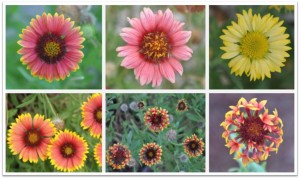
Gaillardia pulchella
The striking display of flower color Indian Blanket offers is not its only feature. It is also a source of nectar for many different butterfly species. Stephen Brown, a horticulture agent in Lee County Florida, has an excellent publication on Gaillardia pulchella that lists this plant species’ interesting attributes.









